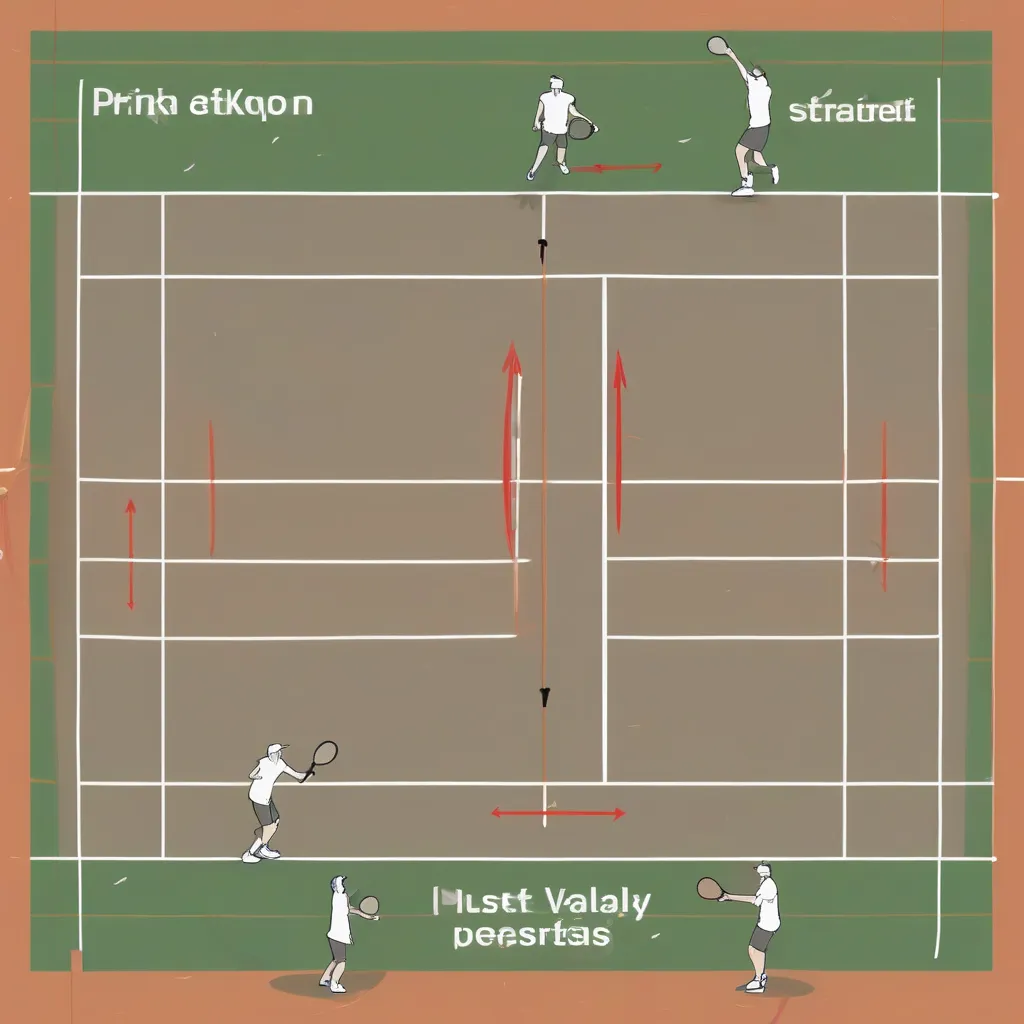Imagine this: you’re at the net in a heated pickleball match, the ball coming straight towards you. Do you smash it with all your might or play it strategically? Understanding the role of the non-volley zone, often called “the kitchen,” is crucial to pickleball success. This area dictates a significant portion of the game’s strategy, influencing player positioning, shot selection, and overall match outcome. This article will delve into the intricacies of the non-volley zone, equipping you with the knowledge to dominate the pickleball court.
What is the Non-Volley Zone?
The non-volley zone is the 7-foot area on either side of the net, extending from the net post to the non-volley zone line. Stepping into this zone, or even touching it with your paddle or any part of your body while volleying a ball (hitting it before it bounces), is a fault. This seemingly simple rule drastically impacts how pickleball is played.
Why is the Non-Volley Zone Important?
The non-volley zone’s primary purpose is to prevent overpowering smashes from right at the net, fostering longer rallies and more strategic gameplay. It forces players to develop a nuanced approach, emphasizing controlled shots, dinks, and strategic positioning.
Controlling the Net
While you cannot volley within the kitchen, controlling the net is still paramount. Positioning yourself just outside the non-volley zone allows you to quickly react to volleys and dinks, putting pressure on your opponents. This “third shot drop” strategy, where you drop the ball softly into your opponents’ kitchen after the serve and return, is a key tactic to gain net control.
Preventing Bang-Bang Plays at the Net
By preventing volleys within the kitchen, the non-volley zone reduces the likelihood of quick, “bang-bang” plays at the net. This promotes longer rallies, requiring players to employ more finesse and strategy, rather than relying solely on power.
 Pickleball Non-Volley Zone Strategy
Pickleball Non-Volley Zone Strategy
Forcing Strategic Shot Selection
The non-volley zone forces players to carefully consider their shot choices. Instead of simply smashing every ball, players need to think about placement, spin, and speed to outmaneuver their opponents. Dinking, a soft shot that drops just over the net and into the opponent’s non-volley zone, becomes a vital weapon.
Common Mistakes and How to Avoid Them
Even experienced players can fall prey to common non-volley zone errors. Understanding these pitfalls can significantly improve your game.
Volleying in the Kitchen
Accidentally stepping into the kitchen while volleying is a common mistake. Be mindful of your footwork and avoid lunging or reaching too far into the zone. Developing good court awareness and practicing footwork drills can help avoid this fault. See our article on pickleball drills for consistency: Introduction to Common Pickleball Drills for Consistency.
Failing to Exploit the Kitchen Line
Many players are hesitant to get close to the non-volley zone line. However, positioning yourself just outside the kitchen allows you to react quickly and volley balls that land just outside the zone. Practice moving in and out of the kitchen effectively to maximize your court coverage. Check out our article on effective court coverage: Pickleball Strategies for Effective Court Coverage.
Neglecting Dinking
Dinking is a crucial skill in pickleball, particularly when playing near the non-volley zone. Mastering the dink allows you to control the pace of the game and force errors from your opponents.
Advanced Non-Volley Zone Strategies
Once you understand the basics, you can start incorporating more advanced strategies involving the non-volley zone.
Erneying
“Erneying” is a legal volley where a player hits the ball after it bounces in the non-volley zone and then lands inside the kitchen. This can be a powerful offensive tactic, allowing you to attack the ball aggressively while still being within the rules.
Attacking the Third Shot Drop
While the third shot drop is a common tactic to gain net control, learning how to anticipate and attack it effectively can be a game-changer. This involves being ready to move forward and hit a volley or drive the ball deep into the opponent’s court.
Anticipating Your Opponent’s Moves
Understanding your opponent’s tendencies and anticipating their shots, particularly near the kitchen, is essential for advanced pickleball strategy. This allows you to position yourself effectively and react quickly to their shots. Read more about anticipating your opponent’s moves: How To Anticipate Your Opponents’ Moves in Pickleball.
As a certified nutritionist and meal prep coach, I always emphasize the importance of strategy, not just in healthy eating but in all aspects of life. Just like planning your meals sets you up for nutritional success, understanding the non-volley zone sets you up for success on the pickleball court.
- Baker, Joe (Author)
- English (Publication Language)
- Bond, Payton (Author)
- English (Publication Language)
- Anderson, Brian (Author)
- English (Publication Language)
- Palcic, Lisa (Author)
- English (Publication Language)
- Foster, Blake (Author)
- English (Publication Language)
- Carnot, Prem (Author)
- English (Publication Language)
- Hall, Dennis (Author)
- English (Publication Language)
- Callahan, John (Author)
- English (Publication Language)
- Publishing, Fitness Research (Author)
- English (Publication Language)
- Arthur, S. M. (Author)
- English (Publication Language)
Conclusion
The non-volley zone is a defining feature of pickleball, shaping its strategic landscape. Mastering its intricacies is not merely about avoiding faults; it’s about understanding how to control the net, dictate rallies, and ultimately, win the game. By practicing your footwork, mastering the dink, and implementing the strategies discussed, you’ll be well on your way to dominating the pickleball court. Now, go out there and put your newfound knowledge to the test! What are your experiences with the non-volley zone? Share your thoughts and challenges in the comments below. Don’t forget to share this article with your pickleball buddies and explore our other articles for valuable tips on improving your game, including safety tips for beginners: Safety Tips for Pickleball Beginners. And for those looking to elevate their performance, check out our training strategies: Training Strategies to Boost Pickleball Performance.









